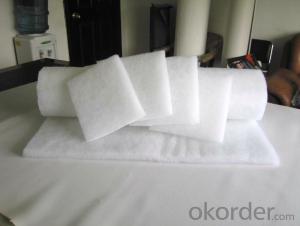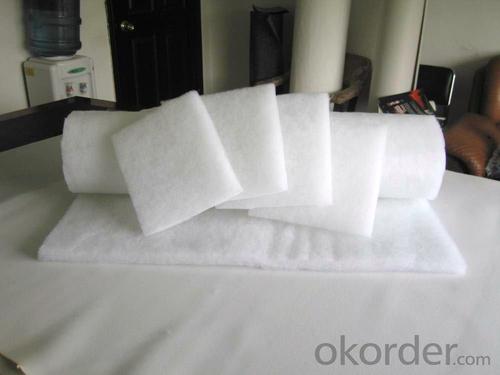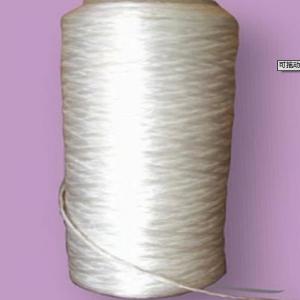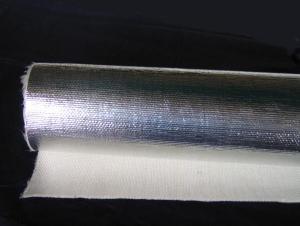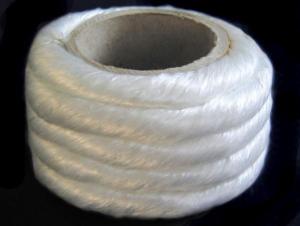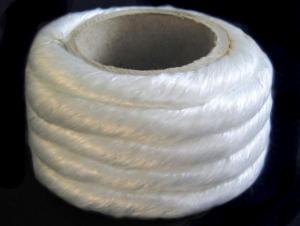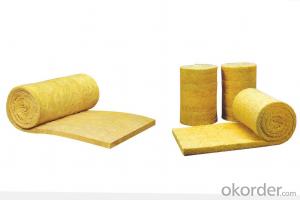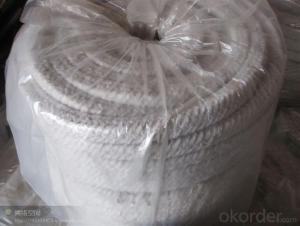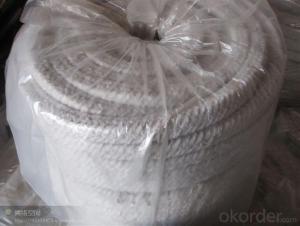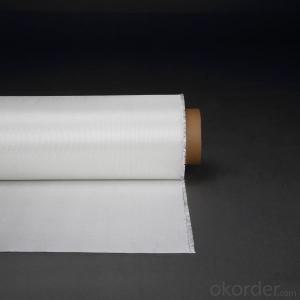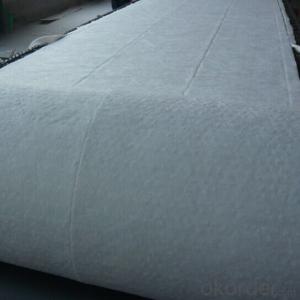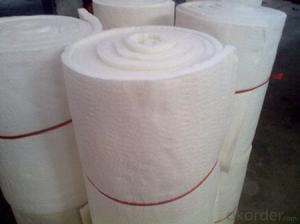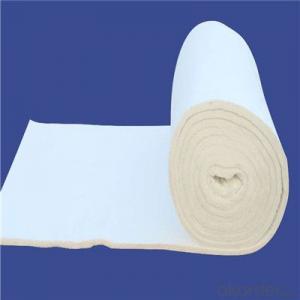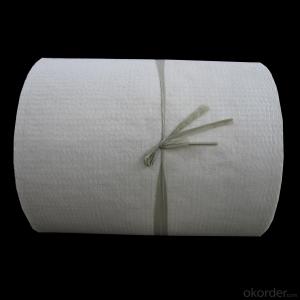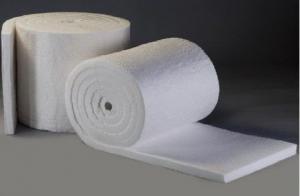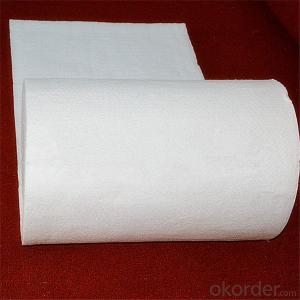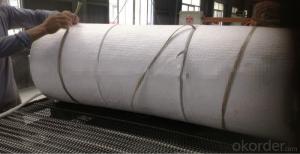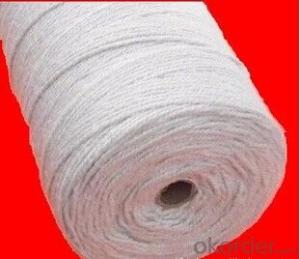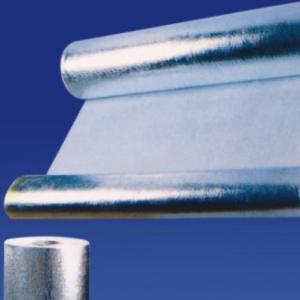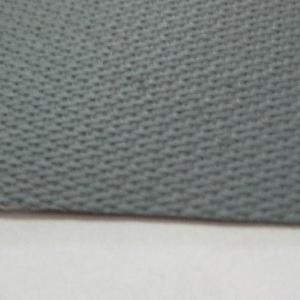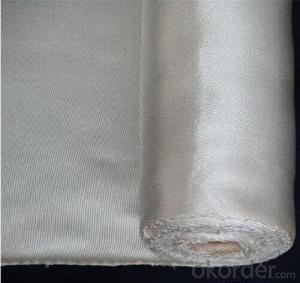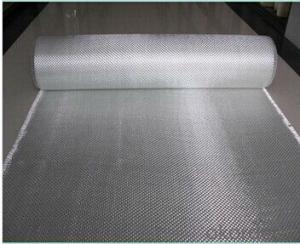Glass Fiber Textiles - Pure White Ceramic Fiber Blanket with Low Price
- Loading Port:
- Shanghai
- Payment Terms:
- TT OR LC
- Min Order Qty:
- 1 m.t.
- Supply Capability:
- 111 m.t./month
OKorder Service Pledge
OKorder Financial Service
You Might Also Like
Specifications
Low thermal conductivity
Excellent insulating effect
Good chemical stability
Stable high temperature performance
Easy to cut
Features:
1.Needled blanket
2.Non-combustible
3.Low density and low thermal conductivity
4.Excellent chemical stability
5.Resilience and resistance to thermal shock
6.Flexible and easy to cut or install
7.Good sound insulation and erosion resistance
8.Contain no organic binder
9.Asbestos free
10.Blanket density:96kg/m3,128kg/m3
11.Other thickness or density variations are subject to order
12.Available size:7200mm*610mm*10-50mm
13.Additional coating or coverings according to order
14.Package:520 cartons in a 40HC container,440 cartons in a 40GP container,220 cartons in a 20GP container
Application:
This high-quality fiber blanket has excellent processing or construction strength and anti-high temperature
performance which can meet demands for the application of heat insulation on various hot faces and cold
faces in different furnaces. It is a new type of refractory and insulating materials provided by our company
for customers. The product is white with formal dimension and integrates the performance of heat insulation
and thermal preservation together.
1. The insulating material for wall lining and back lining of industrial furnaces and heating devices
2. Insulating materials of high-temperature equipment
3. Material to produce module/folded module
Physical and chemical composition
Common | Standard | Pure | High Aluminium | Zirconium | ||
Classification temperature(°C) | 1100 | 1260 | 1260 | 1360 | 1430 | |
Work temperature(°C) | <1000 | 1050 | 1100 | 1200 | 1350 | |
Color | White | Pure white | Pure white | Pure white | Pure white | |
Density (kg/m3) | 96 | 96 | 96 | 128 | 128 | |
Permanent linear shrinkage(%)(after24 hours,density 128kg/m3) | -4 | -3 | -3 | -3 | -3 | |
Thermal conductivity (w/m.k) density 128kg/m3)
| 0.09(400°C) | 0.09(400°C) | 0.09(400°C) | 0.132(600°C) | 0.76(600°C) | |
Tensile strength (Mpa) density128kg/m3) | 0.08-0.12 | 0.08-0.12 | 0.08-0.12 | 0.08-0.12 | 0.08-0.12 | |
Chemical Composition (% | AL2O3 | 44 | 46 | 47--49 | 52-55 | 39-40 |
AL203+SIO2 | 96 | 97 | 99 | 99 | - | |
AL2O3+SIO2+Zro2 | - | - | - | - | 99 | |
Zro2 | - | - | - | - | 15-17 | |
Fe2O3 | <1.2 | <1.0 | 0.2 | 0.2 | 0.2 | |
Na2O+K2O | ≤0.5 | ≤0.5 | 0.2 | 0.2 | 0.2 | |
Size (mm) | Common 7200*610*10-50 others up to buyer | |||||
- Q: Is recycled glass recycled high in value? What's the value of it?
- Yes, it can be made into ornaments, such as rabbits, or fruit, and so on
- Q: Are glass fiber textiles suitable for medical applications?
- Yes, glass fiber textiles are suitable for medical applications. They possess excellent properties such as high strength, durability, and resistance to chemicals, making them suitable for use in surgical gowns, wound dressings, and medical implants. Additionally, their non-toxic nature and ability to be easily sterilized further enhance their suitability for medical applications.
- Q: Can glass fiber textile be used in solar panels?
- Glass fiber textile is indeed suitable for utilization in solar panels. Possessing outstanding electrical insulation properties, this lightweight and flexible material can serve as a substrate or backing for solar panels, providing valuable structural support and safeguarding the fragile solar cells. By incorporating glass fiber textile, the longevity of solar panels is enhanced, as it resists weathering, moisture, and UV radiation. Furthermore, the flexibility of glass fiber textile facilitates seamless integration into diverse solar panel designs, offering increased installation options. Consequently, the utilization of glass fiber textile in solar panels contributes significantly to their overall efficiency and durability.
- Q: Can glass fiber textiles be used in reinforcement of basalt fibers?
- Indeed, the inclusion of glass fiber textiles as reinforcement for basalt fibers is feasible. Recognized for their notable robustness and rigidity, glass fiber textiles are well-suited for reinforcement purposes. In contrast, basalt fibers possess exceptional resistance against elevated temperatures and chemical corrosion. By amalgamating these two materials, the resultant composite can exhibit an unparalleled amalgamation of attributes, including remarkable strength, resistance to high temperatures, and heightened durability. Consequently, glass fiber textiles present a viable alternative for reinforcing basalt fibers in diverse sectors, encompassing construction, automotive, and aerospace industries.
- Q: Are glass fiber textiles resistant to chemical degradation?
- Glass fiber textiles, in general, demonstrate resistance to chemical degradation. Comprised of inorganic materials, glass fibers exhibit exceptional resistance to a broad spectrum of chemicals, including acids, alkalis, solvents, and the majority of organic chemicals. This characteristic renders glass fiber textiles appropriate for diverse applications within industries such as automotive, aerospace, construction, and marine, where exposure to chemicals is prevalent. Nevertheless, it is crucial to acknowledge that the degree of resistance can fluctuate based on the particular composition and treatment of the glass fiber textile.
- Q: Can glass fiber textile be used in agricultural applications?
- Yes, glass fiber textile can be used in agricultural applications. It is commonly used for greenhouse coverings, crop protection nets, and shading materials. It offers durability, resistance to weather elements, and provides protection to crops while allowing light transmission.
- Q: Can glass fiber textiles be used in reinforcement of paints?
- Yes, glass fiber textiles can be used in the reinforcement of paints. Glass fiber textiles, also known as fiberglass, are composed of fine fibers made from glass. These fibers are strong and have excellent tensile strength, making them suitable for reinforcing various materials, including paints. When glass fiber textiles are added to paint, they enhance its mechanical properties and improve its durability. The fibers act as reinforcement, providing additional strength and resistance to cracking, chipping, and peeling. This is particularly beneficial for paints that are applied on surfaces that are exposed to harsh conditions or high levels of stress. In addition to improving the mechanical properties of paints, glass fiber textiles can also enhance their thermal and chemical resistance. Fiberglass is known for its excellent resistance to heat and chemicals, making it a suitable choice for paints that are used in environments where these factors are present. Furthermore, glass fiber textiles can also contribute to reducing the overall weight of the paint, as fiberglass is lightweight. This can be advantageous in applications where weight is a concern, such as in aerospace or automotive industries. Overall, glass fiber textiles can be an effective reinforcement for paints, providing improved strength, durability, thermal resistance, chemical resistance, and reduced weight. However, it is important to ensure proper dispersion and adhesion of the fibers within the paint matrix to maximize their benefits.
- Q: How do glass fiber textiles compare to synthetic fiber textiles?
- Glass fiber textiles and synthetic fiber textiles have distinct characteristics that set them apart from each other. Glass fiber textiles are made from fine strands of glass, which are woven or knitted together to create a fabric. They are known for their strength and durability, making them suitable for applications that require high tensile strength and resistance to heat and chemicals. Glass fiber textiles also have excellent dimensional stability, meaning they do not stretch or shrink easily. This makes them ideal for use in reinforced composites, such as in the automotive and aerospace industries, where strength and stability are paramount. On the other hand, synthetic fiber textiles are made from man-made fibers, such as polyester, nylon, or acrylic. These materials are designed to mimic the properties of natural fibers, such as cotton or silk, but with added benefits. Synthetic fiber textiles are typically lightweight, easy to care for, and resistant to wrinkling and shrinking. They also have moisture-wicking properties, making them suitable for sportswear or outdoor gear. Additionally, synthetic fibers can be engineered to possess specific properties, such as flame resistance or UV protection. When comparing glass fiber textiles to synthetic fiber textiles, it is important to consider the intended use and desired properties. Glass fiber textiles excel in applications that require strength, dimensional stability, and resistance to heat and chemicals. Synthetic fiber textiles, on the other hand, are more versatile and can be tailored to specific needs, such as moisture management or comfort. Both types of textiles have their own advantages and are chosen based on the requirements of the particular application.
- Q: How do glass fiber textiles contribute to mold resistance?
- Glass fiber textiles contribute to mold resistance by being inherently resistant to moisture and mold growth. Unlike organic materials like cotton or wool, glass fibers do not provide a suitable environment for mold to thrive. They are moisture-resistant, preventing the accumulation of water that molds need to grow. Additionally, glass fibers do not contain any organic matter that can serve as a food source for mold. This makes glass fiber textiles an excellent choice for applications where mold resistance is desired, such as in building insulation, carpets, or upholstery fabrics.
- Q: Does glass fiber textile have any health risks?
- Glass fiber textile does not pose significant health risks. It is non-toxic, non-allergenic, and does not release harmful particles or fibers into the air. However, handling glass fiber textiles without proper protective equipment may cause skin irritation or cuts, so caution should be exercised during installation or handling.
Send your message to us
Glass Fiber Textiles - Pure White Ceramic Fiber Blanket with Low Price
- Loading Port:
- Shanghai
- Payment Terms:
- TT OR LC
- Min Order Qty:
- 1 m.t.
- Supply Capability:
- 111 m.t./month
OKorder Service Pledge
OKorder Financial Service
Similar products
Hot products
Hot Searches
